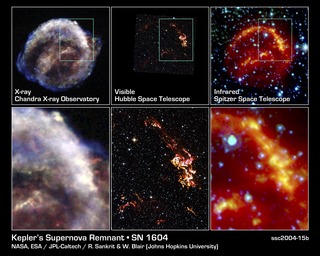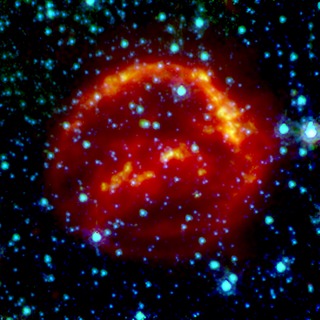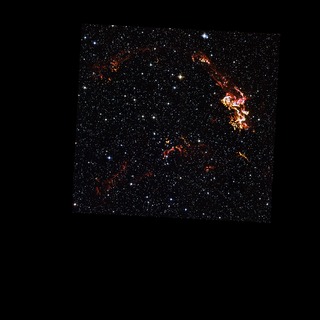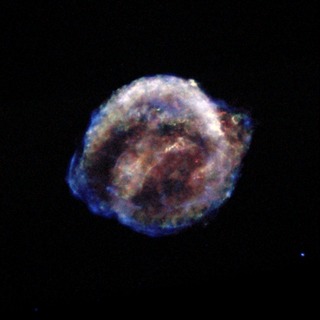
Credit: NASA/ESA/R. Sankrit and W. Blair (Johns Hopkins University)
Observation • October 6th, 2004 • ssc2004-15b1
ssc2004-15b1
This infrared image from NASA's Spitzer Space Telescope shows the expanding remains of a supernova, called Kepler's supernova remnant, first seen 400 years ago by sky watchers, including famous astronomer Johannes Kepler. The supernova remnant is a fast-moving shell of iron-rich material from an exploded star, surrounded by an expanding shock wave that is sweeping up interstellar gas and dust. The image reveals a bubble-shaped shroud of gas and dust that is 14 light-years wide and is expanding at 4 million miles per hour (2,000 kilometers per second).
The Spitzer telescope shows microscopic dust particles that have been heated by the supernova shock wave. The dust re-radiates the shock wave's energy as infrared light.
Kepler's supernova, the last such object seen to explode in our Milky Way galaxy, resides about 13,000 light-years away in the constellation Ophiuchus.
The Spitzer observations were taken in August 2004.
About the Object
- Name
- Kepler's Supernova Remnant • SN 1604
- Type
- Nebula > Type > Supernova Remnant
- Star > Evolutionary Stage > Supernova
- Distance
- 13,000 Light Years
Color Mapping
| Band | Wavelength | Telescope |
| Infrared | 3.6 µm | Spitzer IRAC |
| Infrared | 4.5 µm | Spitzer IRAC |
| Infrared | 8.0 µm | Spitzer IRAC |
| Infrared | 24.0 µm | Spitzer IRAC |
Astrometrics
- Position (J2000)
- RA =17h 30m 41.1s
- Dec = -21° 29' 26.0"
- Field of View
- 5.6 x 5.6 arcminutes
- Orientation
- North is 2.6° right of vertical







